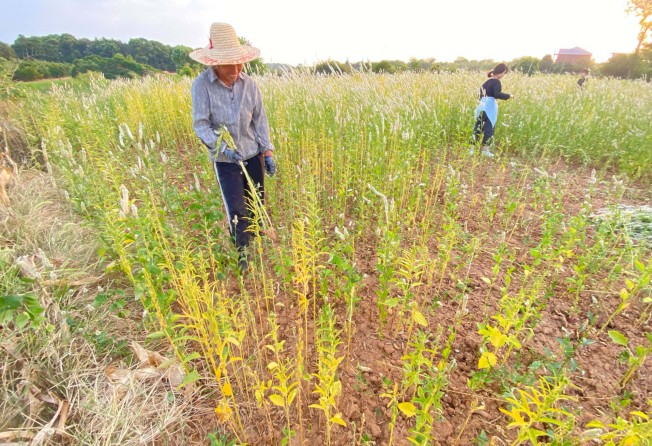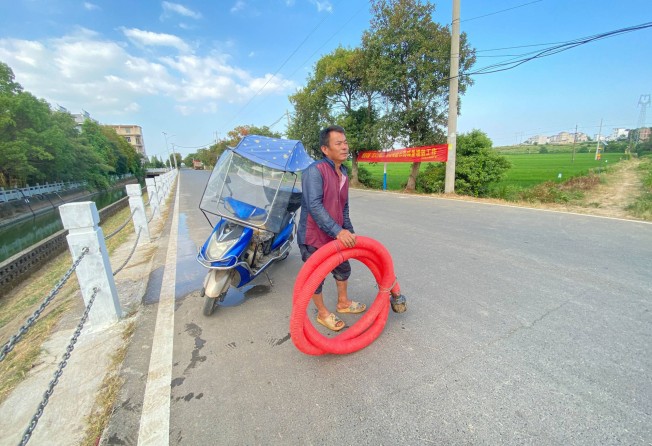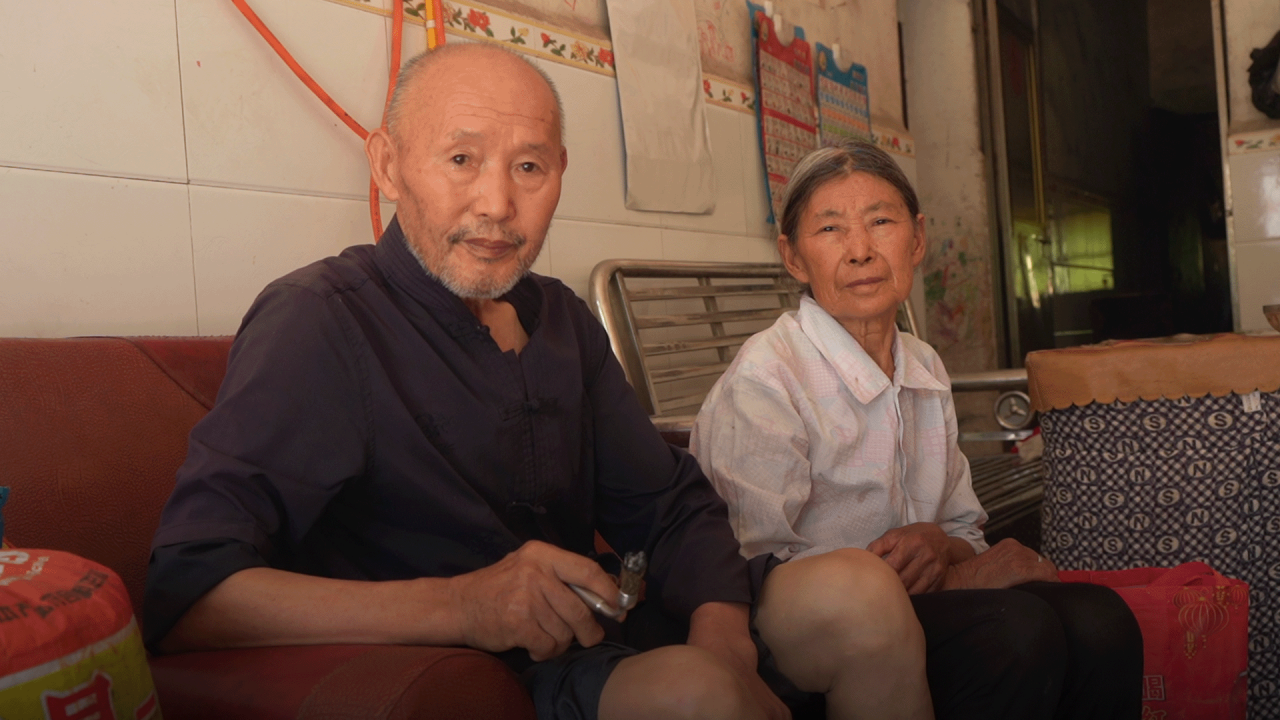
In China’s rice-growing heartland, farmers fight to save the autumn harvest
- Poyang Lake and surrounding wetlands in Jiangxi province are parched, and rice farmers in the region are fearful about the coming harvest
- Despite the drought, analysts say China has ample rice reserves and a drop in output this year is unlikely to cause volatility in global prices

Like generations before them, Zhang Yue and her husband rely on the health of China’s largest lake for their livelihood.
The couple typically earns about 60,000 yuan (US$8,700) per year farming rice, corn and sesame on the edge of Poyang Lake, just enough to eke out a living for a family of six.
But this year, their income is likely to be cut in half due to a record summer heatwave and drought that has smothered more than 20 provinces across the country.
Poyang Lake and surrounding wetlands are an important source of irrigation for Jiangxi province, one of China’s rice growing heartlands.
Though the lake’s size fluctuates annually between wet and dry seasons – but is shrinking overall – the lack of rain across southern China since July has seen water levels fall at the fastest pace on record, reaching a low of eight metres early in September.

In late June, the body of water in the lake was 3,331 square metres (35,854 sq ft), but that had shrunk to just 727 square metres last week.
“I have never seen a drought like this,” said Zhang. “The nearby ponds and reservoirs have dried up.”
The extreme weather, which scientists say will become more common with climate change, has put farmers and the government on edge.
The autumn harvest accounts for three quarters of China’s grain output. Although the first of China’s three rice crops was harvested under normal conditions, “middle rice”, the second crop, is now entering the flowering stage and the late-season crop is in the growth stage.
Both are very sensitive to temperature and rainfall.
Zhang, whose farmland is among the most barren plots in her village, is growing increasingly worried about the summer and autumn harvest.
In her village, rice paddies, corn fields, fish and shrimp farms are all short of water. The scorching summer heat has also caused rare pest infestations.
“There has not been a drop of rain since July, and we can only rely on a little dew in the morning,” Zhang said.
“The temperature is so high that pesticides do not work, and the pest problem is particularly severe.”
Though the heatwave has subsided somewhat, the drought is yet to abate and may persist into autumn, China’s weather agency has said.

Grain output in Jiangxi, along with other provinces in the middle and lower reaches of the Yangtze River Basin such as Hunan and Anhui, are most at risk. But other provinces have been affected too, including Sichuan, Hubei, Henan and Guizhou.
Farmer Li Ge, from Yugan county in northern Jiangxi, said the drought will no doubt affect rice output, but the full extent will not be known until late September.
“We have to spend a lot of extra money to fight the drought,” said the farmer in his late 50s. “And the price of fertiliser has risen to 200 yuan this year from 115 yuan last year,” he said.
In previous years, Li earned about 400-500 yuan per mu (0.66 hectares), but this year he said it could fall as low as 200 yuan per mu.
Despite the worrying signs, it is too early to estimate the rice yield for the coming harvest, said a town-level agricultural official in Nanchang city, who refused to give his name because he was unauthorised to speak with the media.
“If it doesn’t rain, the water level of nearby rivers and reservoirs will continue to drop, so we do not know if it can make it to late September,” he said.
“Now, from every village cadet to farmers, there is only one mission: fight against the drought.”
His town has invested huge amounts to pump water from rivers to fields and are monitoring the irrigation situation 24/7.
“I haven’t had a full night’s sleep since July,” he said.
A potential drop in China’s rice output this year due to adverse weather in the Yangtze River region is unlikely to drive major volatility in global rice prices, Fitch Ratings said last week.
“Fitch estimates that 10-20 per cent loss rates for this year’s middle-season rice in the seven most affected provinces could potentially reduce China’s annual rice output by 3-6 per cent, or 7 million-14 million metric tonnes,” it said.
“China’s import needs could rise on reduced domestic yields, but its abundant rice reserves and the government’s tolerance for moderate fluctuations in reserve levels should help limit the increase.”
Even with the extreme weather this year, China was well placed to safeguard food output and stabilise prices, said Li Guoxiang, a researcher at the rural development institute of the Chinese Academy of Social Sciences.
In recent years, China has expanded farmland for grain production, so domestic rice output had increased and there was now a surplus, he said.
China has turned about 900 million mu – about half the country’s total arable land – into “high-standard” farmland, he said. The designation m
Industrial farming and efficient irrigation are being used on this farmland – which has been upgraded to better withstand extreme weather – to conserve water and increase crop yields.
“China’s food problem is a structural issue. It is mainly a lack of feed grain, with a surplus of rice, so the current drought has a limited impact on domestic food security or the overall food prices,” Li said.
But that will be of little consolation for Zhang, who is bracing for a dramatic fall in income this year. She has to pay for her children’s medical care, rent on the farmland she leases and fertilisers for next year’s spring planting.
“I will definitely need to borrow money from relatives later this year. Many households here are struggling,” she said.

